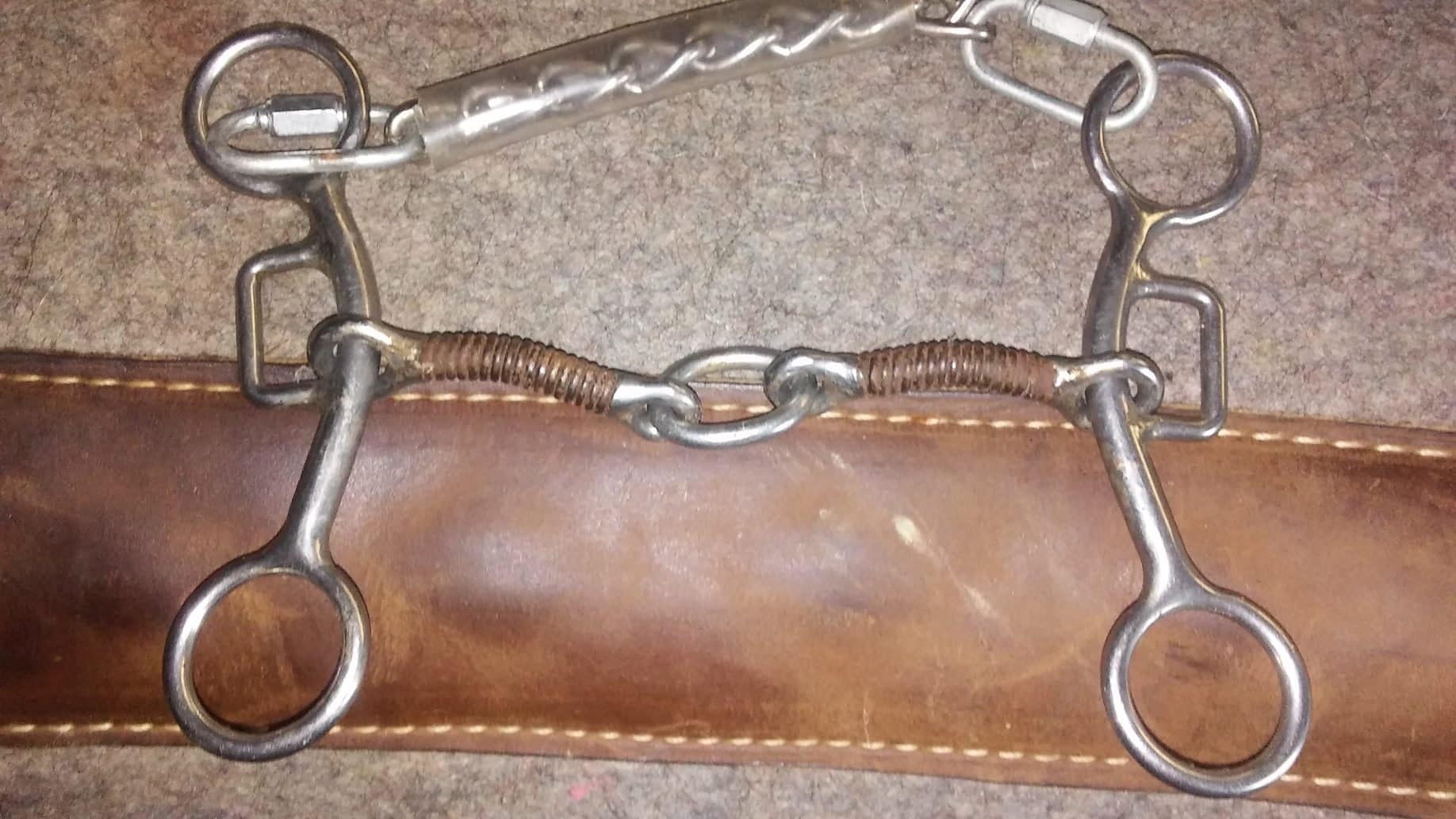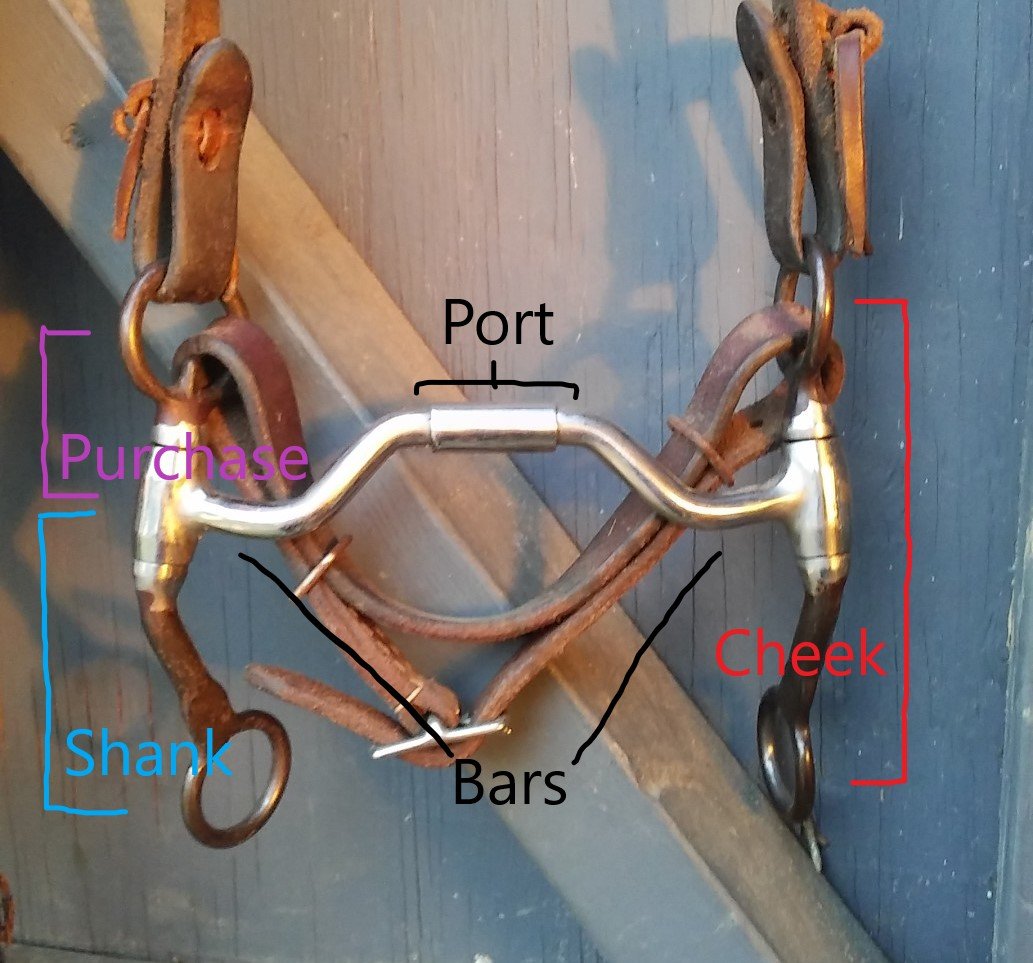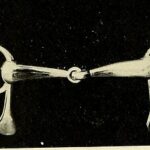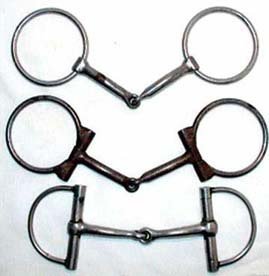
Well, our Bits 101 series is finally drawing to a close. It looks like we’ll wrap things up with one last post on “specialty” bits. This article does contain affiliate links. See the bottom of the article for bit recommendations.
Lifter Bits
Barrel Racing
There are two very different kinds of lifter bits. The first type is marketed for barrel racing. This is the type I know the most about.
There are a lot of “lifter” bits on the market that are nothing more than gimmicks, so, like any specialty bit, extreme caution should be used when shopping.

I really like the design of some of Sharon Camarillo’s bits, particularly the tender touch and, the bigger version, the plus touch. I’ve used the tender touch in the past and will probably use it again in the future. There are a few issues I see though. These bits are not for beginning riders. I wish they came with smooth mouthpieces, but that’s how all her bits are. The lifesaver ring works pretty much like every other three-piece mouth piece, so don’t fall for the gimmick that you’re getting something super special. You’re paying for the name. They’re great bits, well designed, and I love the feel, but you do pay for the name.
There is a nice three-piece dogbone lifter that’s a little lighter and is made by Charmayne James. It’s got the nice smooth mouthpiece for those who are not comfortable with wrapped wire.
Western Pleasure
The other type of lifter is made for the pleasure ring. These are, again extremely specialized. At this point, I don’t have any experience with these. There is also a very high chance of disaster if one of these babies is put in inexperienced hands. I don’t usually do this, but given the sensitivity of these bits, at this point, I am going to have to refer you to your trainer.
Gag bits
Most people either love them or hate them. They are a type of leverage bit. Gag bits work mostly off the poll, bars of the mouth, and tongue. They give more warning due to the slide of the rings and poll pressure. Many people claim them to be “lifter bits.” I personally have never found them to work for that purpose. Other people claim they encourage downward head movement due to poll pressure. This has been true for the horses I’ve used large gags like wonder bits with. The biggest issue I’ve found with large gags is over bending. I’ve found most horses either become over reactive when the gag starts to engage or so dull they tune it out. Either scenario is dangerous.
I generally want something that will have quick clear communication. A little gag is ok for horses who like more warning. In this situation, my first choice would be a teardrop shank – not a gag and it give less warning than a gag, but it would be my first choice. For something with even more delay, I would go to something like a Jr. Cowhorse which has very minimal gag. I know a lot of people who swear by them. I would not use a bit with more gag than a Jr. Cowhorse.
There’s going to be someone out there asking: “What about a wonder bit?” I would reserve a special place for the wonder bit right next to the mechanical hackamore – in the trash. Wonder bits have so much gag they are useless. I’ve tried them and all they do is make the horse stiff, dull, and heavy. Don’t go there.
Draw Gags
Now I’m getting hives. Draw gags are a weird combination of snaffle and gag action. I’m going to be completely honest here and say that I have no idea what was going on when this thing was designed. It takes poll pressure to the extreme while simultaneously choking up on the bit. I will fess up and say that there was a point in my early riding career (before my dressage re-education) that I got desperate enough to use one of these monstrosities. Yeah, that didn’t last long or end well. If you get to the point where your horse is so out of control that you feel like you need one of these, you should not be getting on the horse again until he’s learned some better manners, because this is never necessary under any circumstances.









